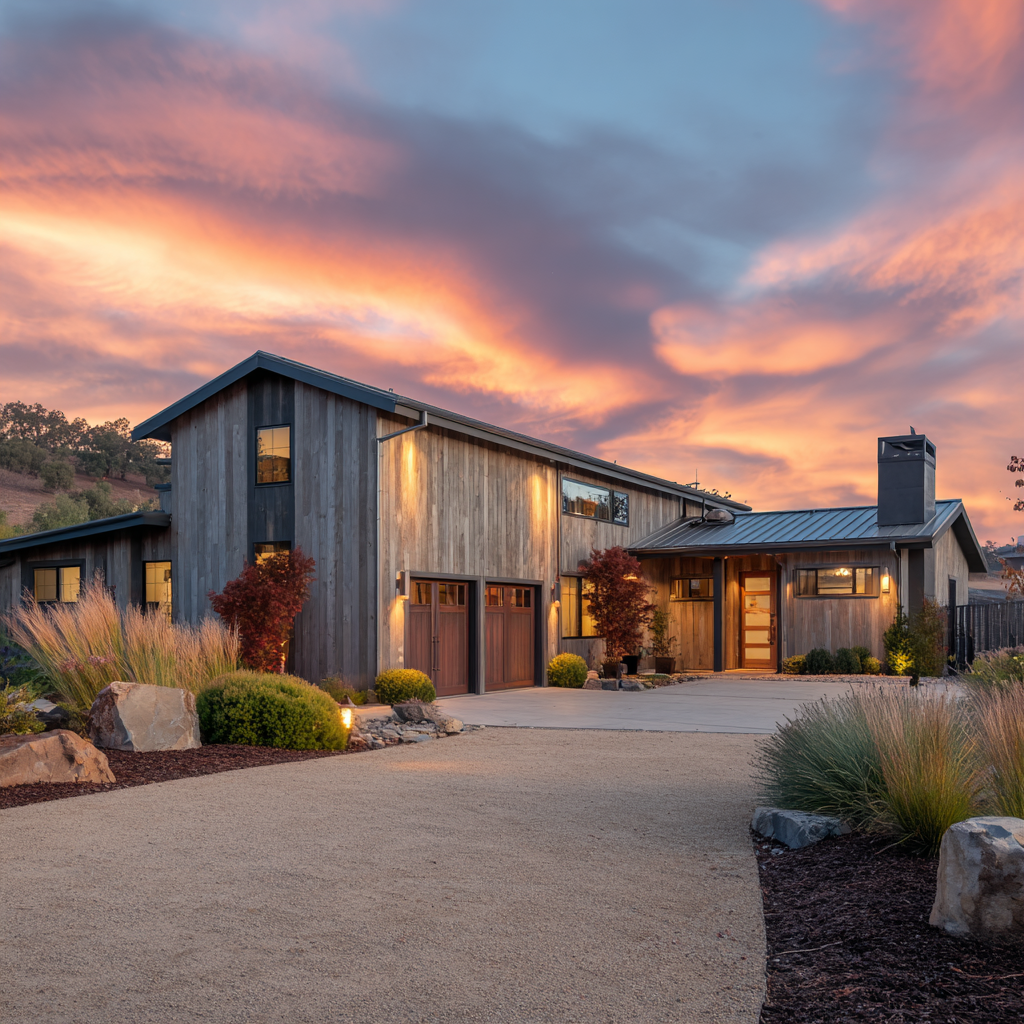 In the heart of wine country, your home’s exterior isn’t just a shell—it’s a statement. And if you’re a homeowner in Napa, CA, you’ve likely faced the great debate: Siding or Stucco?
In the heart of wine country, your home’s exterior isn’t just a shell—it’s a statement. And if you’re a homeowner in Napa, CA, you’ve likely faced the great debate: Siding or Stucco?
Both offer charm, protection, and curb appeal. But when it comes to durability, maintenance, and fire resilience in our California climate, the differences matter. Let’s explore which one may be the better fit for your home in sun-soaked, wildfire-prone Napa.
1. Aesthetic Appeal: Style Matters in Wine Country
Let’s start with looks—because in Napa, style and scenery go hand-in-hand.
- Stucco: Offers a timeless, smooth or textured finish common in Spanish, Mediterranean, and ranch-style homes.
- Siding (especially fiber cement like James Hardie): Offers more design versatility—horizontal lap, vertical panels, shingle-style, or board-and-batten—and pairs well with both traditional and modern homes.
💡 In neighborhoods blending old-world charm and contemporary design, siding gives you more flexibility to match your home’s personality.
2. Durability & Climate Resistance
Napa gets dry summers, mild winters, and the occasional atmospheric river. The right exterior should handle it all.
| Feature | Stucco | Fiber Cement Siding |
| Moisture resistance | Prone to cracking and leaks | Highly water-resistant |
| Fire resistance | Excellent | Excellent (Class A rated) |
| Earthquake tolerance | Brittle—can crack | Flexible—less likely to fracture |
| UV/fade resistance | Can discolor over time | Engineered for UV durability |
🛠️ Stucco’s biggest weakness? Water intrusion and cracking—especially when improperly installed.
3. Maintenance Needs
Let’s face it—most Napa homeowners would rather sip wine than scrape walls.
- Stucco: Requires frequent inspection for cracks. Repairing stucco often involves patching and color-matching, which can be tricky and visible.
- Siding: Fiber cement is low-maintenance, doesn’t rot, and resists termites. Occasional cleaning and repainting every 10–15 years is all it takes.
📅 Over 30 years, siding typically requires fewer repairs and less stress.
4. Cost Considerations
While cost varies based on the product and installation, here’s a ballpark:
- Stucco: Moderate initial cost, but hidden maintenance and repair expenses can add up—especially if cracking or leaking occurs.
- Siding: Slightly higher upfront investment, but greater long-term value thanks to fewer repairs and better warranties.
💡 Think of siding as a wine that ages well—higher upfront cost, but it pays off with time.
5. Wildfire Protection: A Local Necessity
Living in Napa means thinking about wildfire resilience—not someday, but now.
🔥 Stucco does offer fire resistance due to its cement content—but if cracks allow embers inside, it’s game over.
🔥 James Hardie fiber cement siding is non-combustible, tested for wildfire zones, and designed to resist flames, flying embers, and heat.
🔥 LP SmartSide (treated engineered wood) is also available with fire-rated options, great for homes near WUI zones.
🏡 If your property borders open space, siding with proper venting and fire-rated installation gives an added layer of security.
6. Environmental Impact
Many Napa residents value sustainability. When it comes to eco-friendliness:
- Stucco: Contains cement, which has a heavy carbon footprint.
- Fiber cement siding: More eco-conscious manufacturing, recyclable elements, and often made from sustainable raw materials.
✅ Bonus: Some siding lines are made with recycled content and come with ENERGY STAR-rated insulation options.
Conclusion: So Which One Wins in Napa?
If you love the old-world look and are prepared for more upkeep, stucco may be your style.
If you want low maintenance, fire resistance, and versatile design, fiber cement siding is likely your best bet—especially for Napa’s fire risk and shifting climate.
At 3 Generations Improvements, we’ve helped hundreds of Napa homeowners find the perfect blend of style, protection, and value—whether that’s upgrading old stucco or installing brand-new siding.
📞 Ready to explore your options? Call us for a free consultation.
🌐 Visit our website

